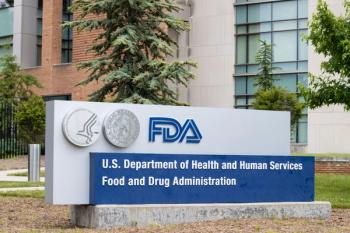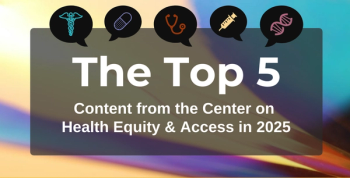
Changes in Breast Density Following Hormone Therapy Predicts Cancer Risk
A new study, published in the Journal of the National Cancer Institute, has confirmed that mammographic density change following estrogen and progestin treatment increases the risk of breast cancer.
A new study, published in the Journal of the National Cancer Institute,1 has confirmed that mammographic density change following estrogen and progestin treatment increases the risk of breast cancer.
Results from the Women’s Health Initiative (WHI) trial, published in 2003,2 showed that a combination of estrogen and progestin increased the incidence of breast cancer overall, as well as invasive disease. With the current study, the authors wanted to identify a direct link between increased risk of breast cancer following changes in breast tissue density due to hormonal treatment.
Using data from the WHI trials, the authors of the current study conducted a nested case-control analysis that randomly assigned postmenopausal women to daily conjugated equine estrogen 0.625 mg plus medroxyprogesterone acetate 2.5 mg or placebo. They compared the breast tissue density of women using mammographic data prior to and 1 year after treatment—this included 174 women who later developed breast cancer and 733 healthy women.
Of the women in the placebo arm (432), 202 (46.8%) saw an increase in mammographic density, while 230 (53.2%) saw a decrease in mammographic density. On the contrary, of 475 women treated with the hormones, 399 (84.0%) saw increased mammographic density while only 76 (16.0%) saw a decrease—each 1% positive change in percent mammographic density increased breast cancer risk by 3% (odds ratio [OR], 1.03; 95% CI, 1.01—1.06) for women in the hormone-treated arm. Women who had the highest increase in mammographic density (>19.3%), their risk for developing breast cancer increased 3.6-fold (95% CI, 1.52–8.56).
Overall, women in the estrogen plus progestin arm had an increased risk of breast cancer compared with those in the placebo arm (OR, 1.28; 95% CI, 0.9—1.82).
The authors are convinced that their data suggests that estrogen plus progestin mediated mammographic density change, and these findings should raise concern and warrant consideration for stopping therapy.
“Doctors should evaluate changes in mammographic density with women who initiate estrogen plus progestin therapy and discuss the breast cancer risk implications,” they conclude.
References
1. Byrne C, Ursin G, Martin CF, et al. Mammographic density change with estrogen and progestin therapy and breast cancer risk. J Natl Cancer Inst. 2017;109(9): djx001. doi: https://doi.org/10.1093/jnci/djx001.
2. Chlebowski RT, Hendrix SL, Langer RD, et al. Influence of estrogen plus progestin on breast cancer and mammography in healthy postmenopausal women: the Women’s Health Initiative Randomized Trial. JAMA. 2003;289(24):3243-3253.
Newsletter
Stay ahead of policy, cost, and value—subscribe to AJMC for expert insights at the intersection of clinical care and health economics.








































